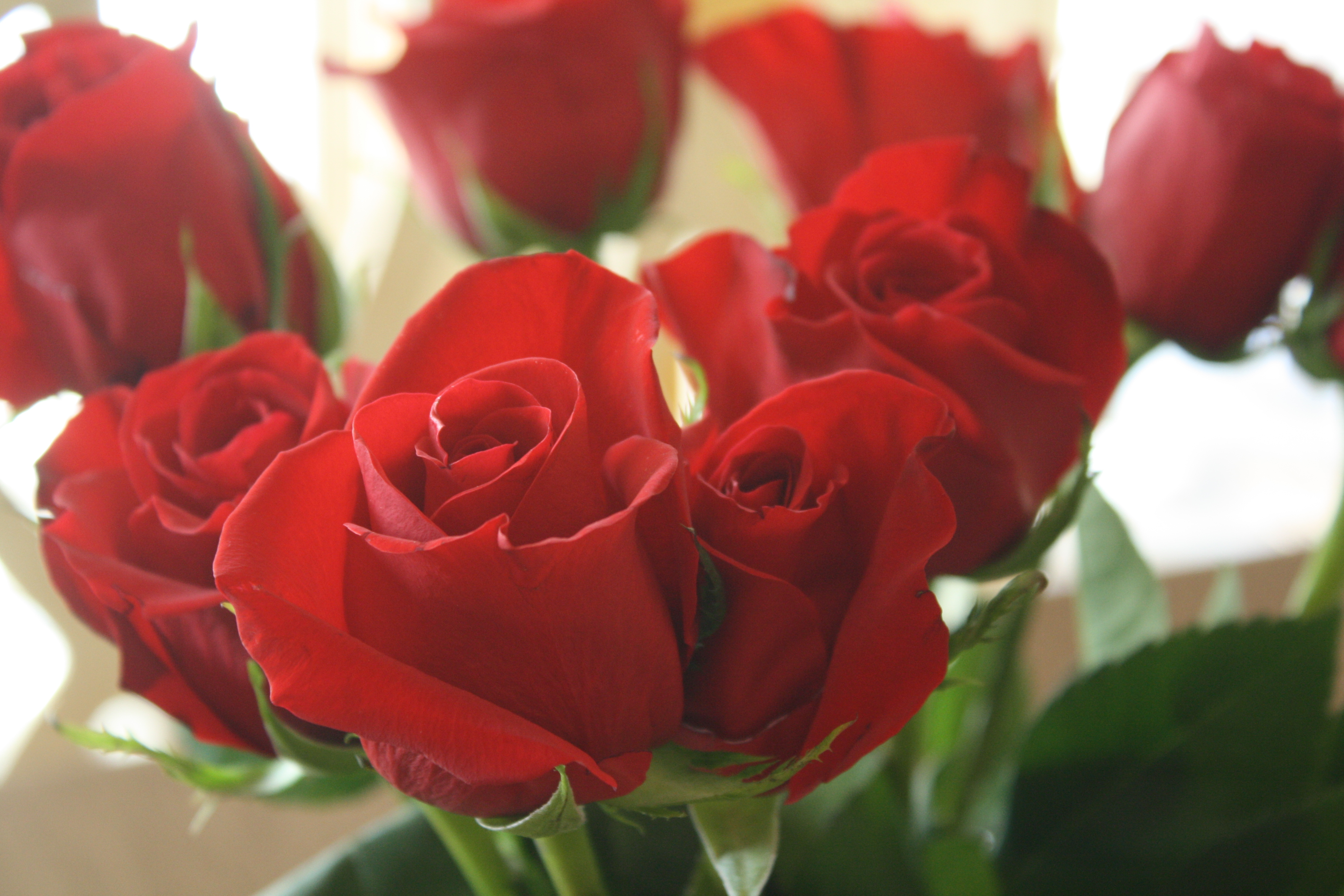 Valentine’s Day is approaching, but I’m not one to give relationship advice on how to find the perfect mate, how to woo, how to rekindle or glue it back together. Nor would I wish to hold forth on fifty ways to leave your lover.What I propose are novel ideas on what you might whisper in your loved one’s ear at the breakfast table over Belgian waffles, juicy strawberries and freshly brewed coffee; over a languorous lunch that starts with a sparkling flute and continues with oysters on the half shell and more; when you reunite to debrief after a hard day’s work; or when you’re snuggling in for a long winter’s nap.
Valentine’s Day is approaching, but I’m not one to give relationship advice on how to find the perfect mate, how to woo, how to rekindle or glue it back together. Nor would I wish to hold forth on fifty ways to leave your lover.What I propose are novel ideas on what you might whisper in your loved one’s ear at the breakfast table over Belgian waffles, juicy strawberries and freshly brewed coffee; over a languorous lunch that starts with a sparkling flute and continues with oysters on the half shell and more; when you reunite to debrief after a hard day’s work; or when you’re snuggling in for a long winter’s nap.
What lassoes a humble writer to launch this conversation on the precipice of Valentine’s Day is the possibility always alive in every relationship—whether new, seasoned or diminished—for more listening, tuned-in attention, a compassionate hand extended to take the hill together, an opening to find something beyond the “already and always” known about a partner, child, parent or friend.
Now back to those waffles and oysters, though preferably not in the same meal, and the whisper of magic words, perhaps more adventurous than “honey”, “baby”, “sweetie”, or “boo” (slang for boyfriend or girlfriend, originating with French beau). It has been suggested by research—and I can confirm based on personal experience—that people can have a different personality manifest in each language they speak. Is it too great a leap to say that terms of endearment might sound more seductive in a foreign language, and the speaker of them might notice a shift in persona beyond the spoken word?
Speakers of romance languages are stereotypically legendary for their ardent purrings of love. If that sweet murmur is mi amor instead of the American colloquial “babe,” both the speaker and the receiver might experience a romantic surge. Other options in Spanish can be mi vida (my life), mi corazón (my heart), mi cielo (my heaven), mi rey/reina (my king/queen), tesoro (treasure), and cariño (like “darling”).
An Italian woman might entice him to come hither with vita mia (my life), cuore mio (my heart), caro (dear one), or polpetto (meatball). (Don’t ask—this is love, not logic. Besides, who doesn’t love a good meatball?) He will melt her heart with belissima (very beautiful), dolcezza (sweetness), principessa (princess), carina (cutie), fragolina (little strawberry), or microbino mio (my little microbe).
As you might guess, the French language is also a rich mine of gems when it comes to terms of endearment. We all know ma chérie thanks to Stevie Wonder’s “Ma Chérie Amour” and the odor-able Pepé le Pew cartoons. A sampling of pet names for the moitié (other half) include mon dou dou (cuddles or pookie), mon petit chou (my little cabbage), ma puce (my flea), and a zoo of other entries inspired by the animal kingdom including rabbit, quail, hen, duckling, chicken, and shrimp—sounds like a full menu of add-ons for a dish of chow mein. He can be mon nounours (my teddy bear), and she can be mon oisillon (my little birdie), or mon chaton (my kitten), but even careful pronunciation may not ensure the desired effect with ma biche (my doe).
Turning now towards northern languages, I don’t think my Dutch father ever called my mother mijn poepie (my poopsie), or bolleke (little round thing), but he might have nuzzled her ear with schatje (little treasure)—yes, as in Ukiah’s own Schat’s Bakery! In German, the diminutive forms of bear, hare, mouse, sparrow and deer are preferred pet names for a loved one: respectively, Bärchen, Häschen, Mäuschen, Spätzchen, and Rehlein. An oddly heartwarming one I came across is Mausbär, a creative combo that adds to the diminutive concept of “mouse” with a big “bear” hug. And the winner in the cutesy category is Schnuckiputzi, mashing up words (as German is wont to do) to form something like “sweet cutie-pie.”
In Sweden, your lover might swoon as you intone sötnos (sweet nose). In Ireland the heart will quicken to the rhythm of Riverdance at the sound of mo chuisle (my pulse). The Polish key to a willing heart might be kruszynko (breadcrumb). In Denmark, min guldklump suggests love cherished over the “gold nuggets” in the bank vault.
Whether it’s Arabic “eyes of a gazelle”, Spanish mi media naranja (the other half of my orange), Tibetan nyingdu-la (most honored poison of my heart), or Russian rybka (little fish), these all really translate to the same thing: affection and devotion, and that’s worth more than all the klumps of guld on the planet.
Now, still in search of that prize, we follow Cupid’s arrow for a brief world tour of the customs of courtship and love. In Mexico, February 14 is El día de amor y amistad (The Day of Love and Friendship) and celebrated with balloons, roses and cards. But before you say ho-hum, fast forward to Saint Anthony’s feast day on June 13 when single women flip the saint’s statue on its head until he manifests their mate. Brazilians opt for “Lover’s Day” on June 12th, and singles undertake their own rites and offerings to implore Santo Antônio to materialize the mate of their dreams.
I’ve read that in France of yesteryear, after happy couples united on Valentine’s and wandered off into les cafés to begin their life together, bonfires were lit on the streets and single women burned images of lost loves and shouted insults into the inferno, voicing their blazing rage against the unfaithful ones. In time, this custom was banned by the French government because it became increasingly incendiary with each passing year.
In South Korea, Valentine’s variations are observed February through April, beginning with the women’s task of seducing the men with candies and flowers. On March 14, known as White Day, the tables turn, and it’s the men who must ante up with chocolates, bouquets and gifts. Then there’s Black Day on April 14, when the so-called unlucky ones eat black bean-paste noodles, called jajangmyeon, out of black bowls to lament their lonely status.
In Wales, there’s no Saint Valentine, but Saint Dwynwen is celebrated on January 25th as the finder of mates and protector of lovers. On that day, a man carves a small but elaborate elaborate wooden spoon and gifts it as a token of dedication to his intended. In the Philippines, hundreds of couples come together at malls and other roomy public sites to take or renew marriage vows in huge ceremonies with thousands of family, friends, and well-wishers in attendance.
When I was a child, Valentine’s Day meant a special breakfast before school: waffles with strawberries and whipped cream instead of the usual porridge or runny egg. It meant a little basket of chocolates on my plate, cards to be delivered to my classmates, and anticipation of the ones I’d receive in return. One website states: “In the USA, there have been many varieties of cards given over the years, some of which have often been rude or quite cruel in their humor.” Why are those the ones I remember? Chris Chambers was my sixth grade heart throb, so I was thrilled to see his name on the envelope. Side one of the card made my pulse quicken: “I love the way your hair hangs down your back…” Unfortunately, the message on the flip side was not so heart-fluttering: “Too bad it doesn’t grow on your head!!!” and a cartoon of a girl with a huge mane but a bald crown and bulging eyes. It still leaves me with the silly vestige of a heartbreak after all these years.
***
It’s not about what words are said or the language in which they are spoken. It’s about the emotion, the sentiment, the feeling that propels them from heart to mind to mouth, and into the waiting universe of the one you love. It can be as seductive as Mia vita, as silly as Ma puce, or as simple as “Hello”, motored by interest and intimacy; “Hey…”, as one open heart inviting another; “Ouch!”, followed by a pillow fight; “What about…”, allowing a suppressed thought or an idea to finally find a voice; or “Whoa! I’m so grateful to see your fabulous self on this special day!” –and every day. (From Wordstruck! The Fun and Fascination of Language by Susanna Janssen)
